Top 10 Reasons to Use Design Thinking: Transform Your Business with User-Centric Solutions
Get the latest updates about our blog posts.
Subscribe so you don’t miss out!
Key Takeaways
- User-Centric Innovation: Design thinking prioritizes understanding user needs, leading to relevant and impactful solutions.
- Enhanced Collaboration: It fosters teamwork by aligning diverse perspectives toward common, user-focused goals.
- Cost and Time Efficiency: Early prototyping and testing help avoid costly mistakes and last-minute changes.
- Agility and Adaptation: Stay ahead of changing market dynamics with design thinking’s flexible approach.
- Competitive Advantage: Stand out in the market by transforming challenges into opportunities through innovative solutions.
Innovation and customer-centricity are crucial for success in this ever-growing and fast-paced digital world. Yet, many organizations struggle to keep up with evolving customer needs, market shifts, and internal alignment. This is where design thinking comes in — a powerful approach that fosters creativity, collaboration, and problem-solving while keeping the user at the heart of every decision.
But why should your organization embrace design thinking? Here are the top 10 reasons to adopt this design thinking:
1. Gain a Competitive Advantage
Struggling to stand out in a crowded market? Design thinking can help your organization identify unique user needs and turn challenges into opportunities. By focusing on the user’s perspective, you can develop products and services that resonate deeply with your audience, making your brand indispensable.
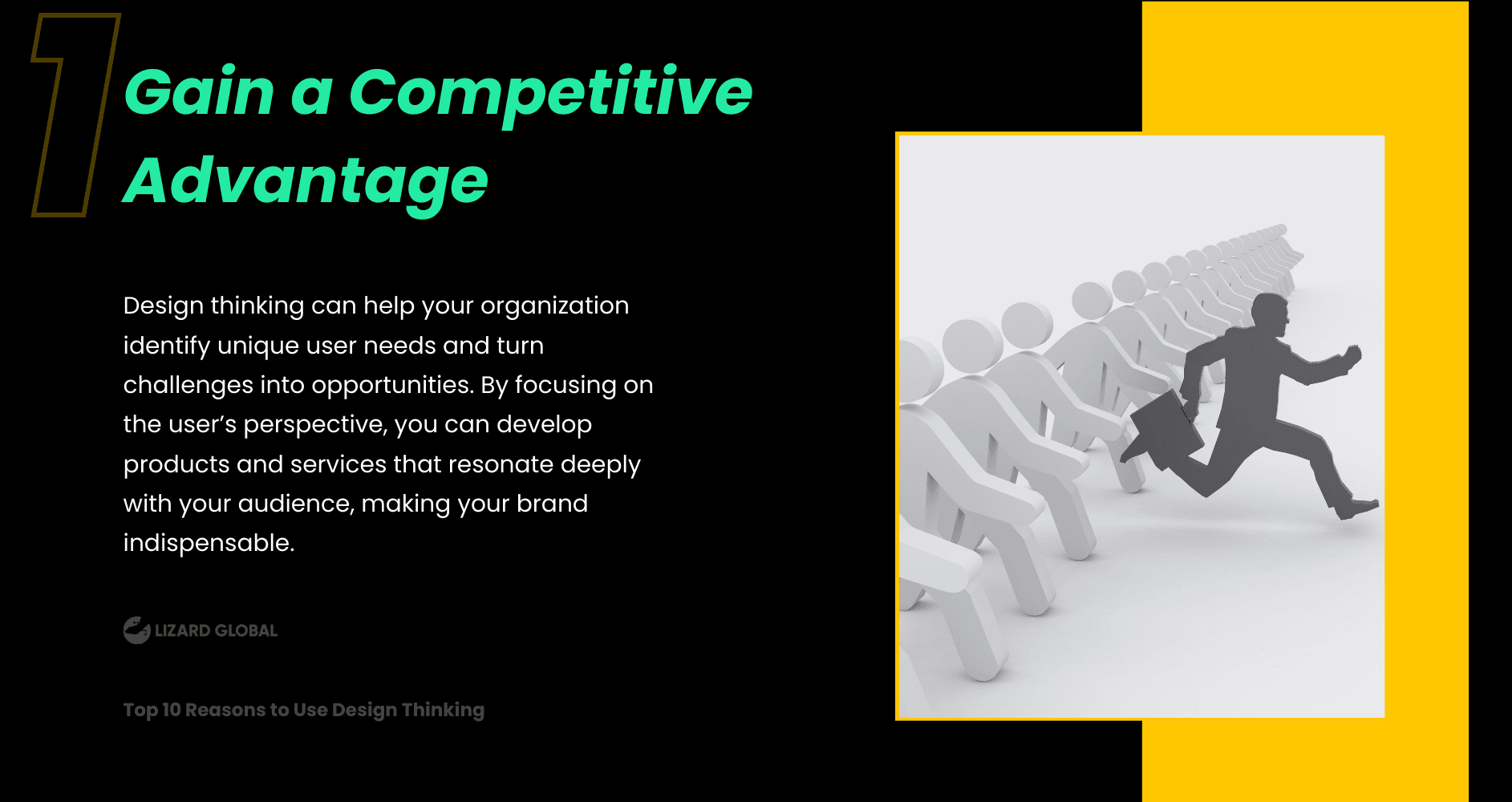
Example: Think of how Apple revolutionized the smartphone market by focusing on intuitive user experiences. Instead of just adding features, they designed around how people naturally interact with technology.
2. Bridge Diverse Stakeholder Perspectives
When internal stakeholders have conflicting viewpoints, progress can stall. Design thinking encourages collaborative problem-solving by bringing together diverse perspectives and aligning them around user-centered goals. This structured approach ensures that every voice is heard while maintaining a clear focus on solving the user’s problem.
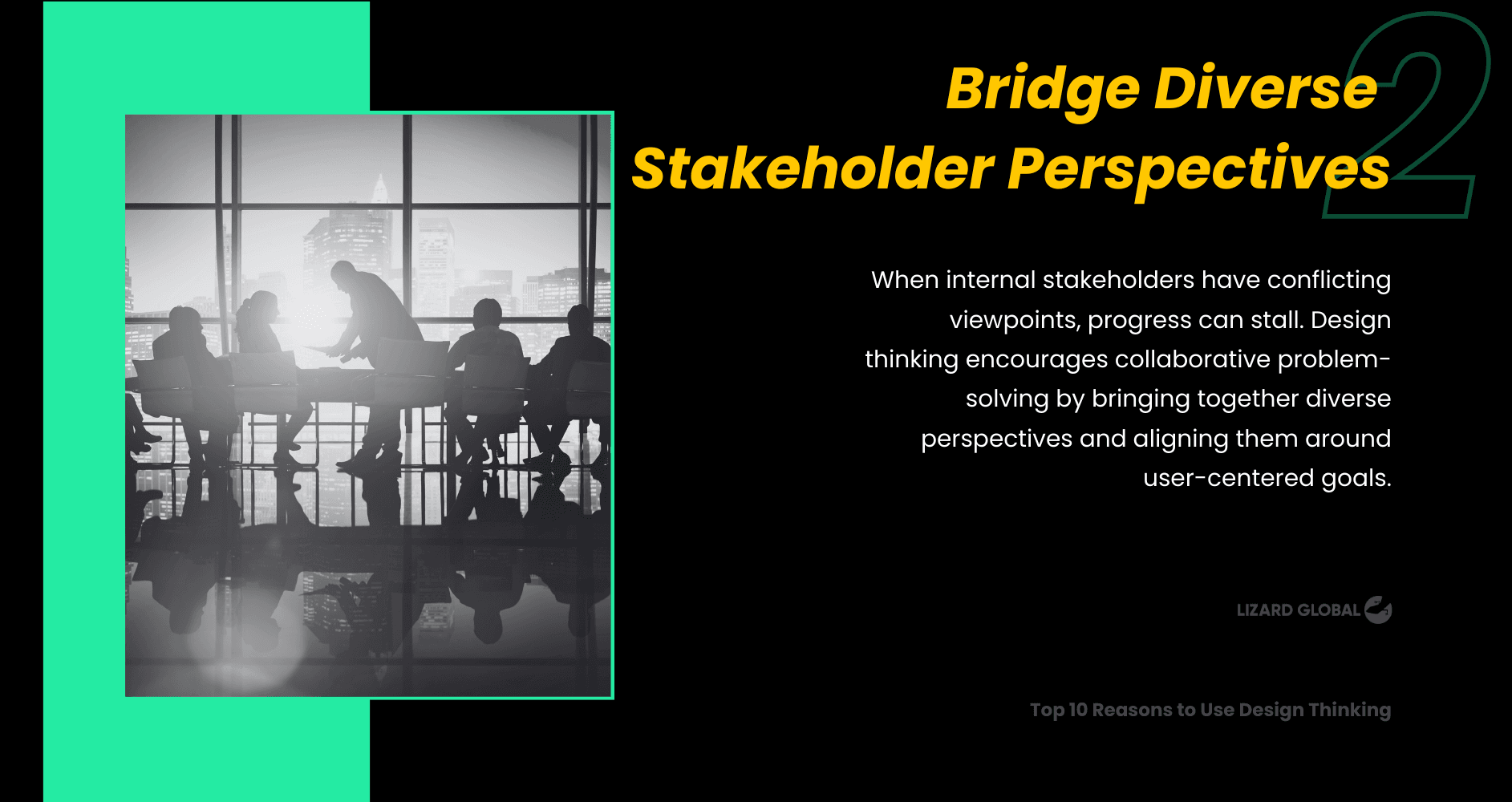
Example: In healthcare, design thinking has been used to align doctors, nurses, and administrators to co-create patient-centric care models.
3. Align Budget with User Needs
Budget constraints can create tension between teams, each pushing their own agenda. Design thinking helps prioritize investments based on user-centric insights, ensuring that resources are allocated efficiently to meet real needs rather than departmental demands.
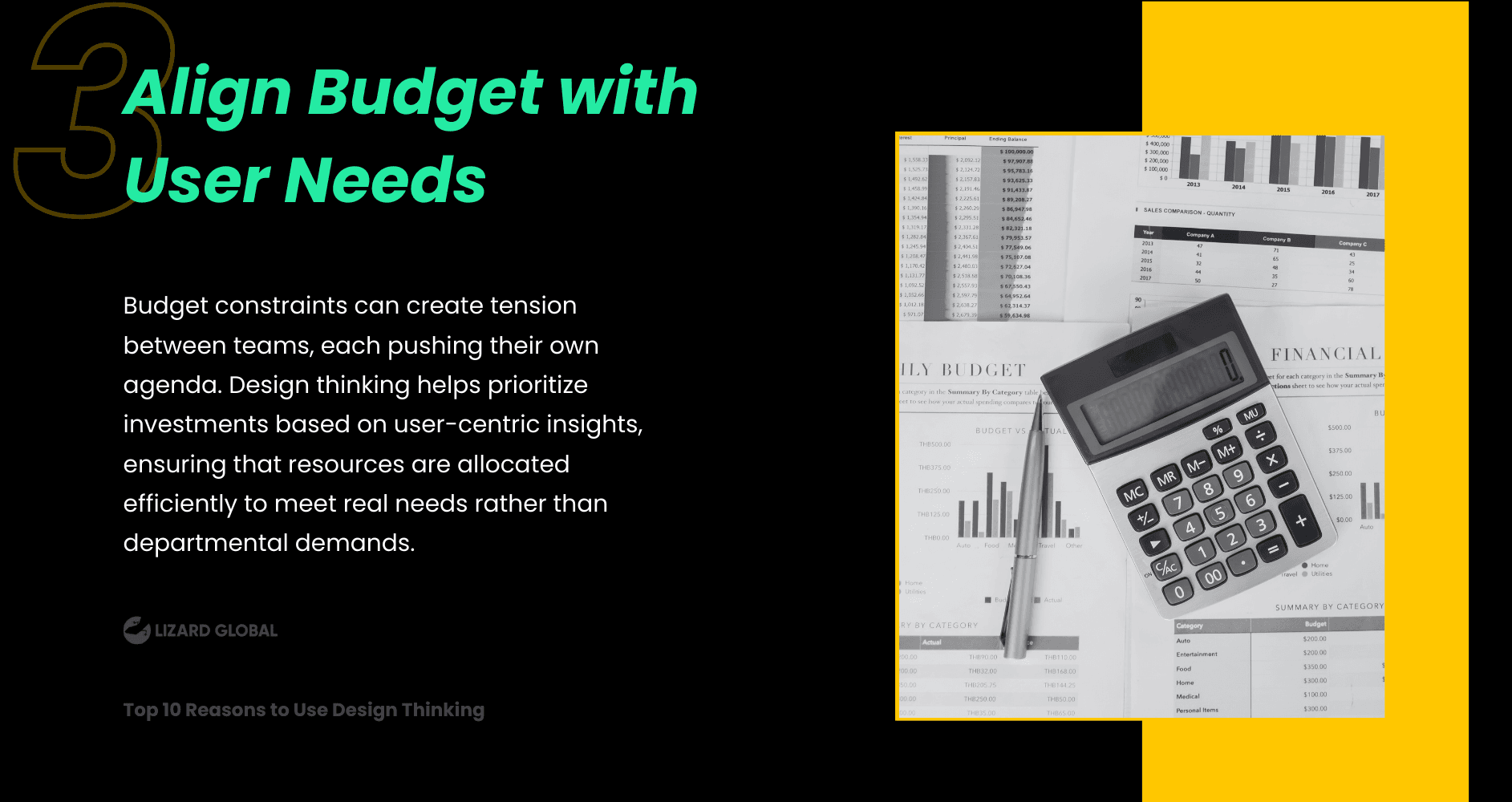
Example: Instead of spreading funds thin across multiple small projects, a design thinking approach might focus on one high-impact initiative that significantly improves the customer experience.
4. Foster User-Centric Innovation
Innovation without a clear user focus can result in wasted efforts. Design thinking provides a structured approach to innovation, encouraging empathy and deep understanding of user behaviors and preferences. This way, you can develop solutions that are not just innovative but also relevant and valuable to your customers.
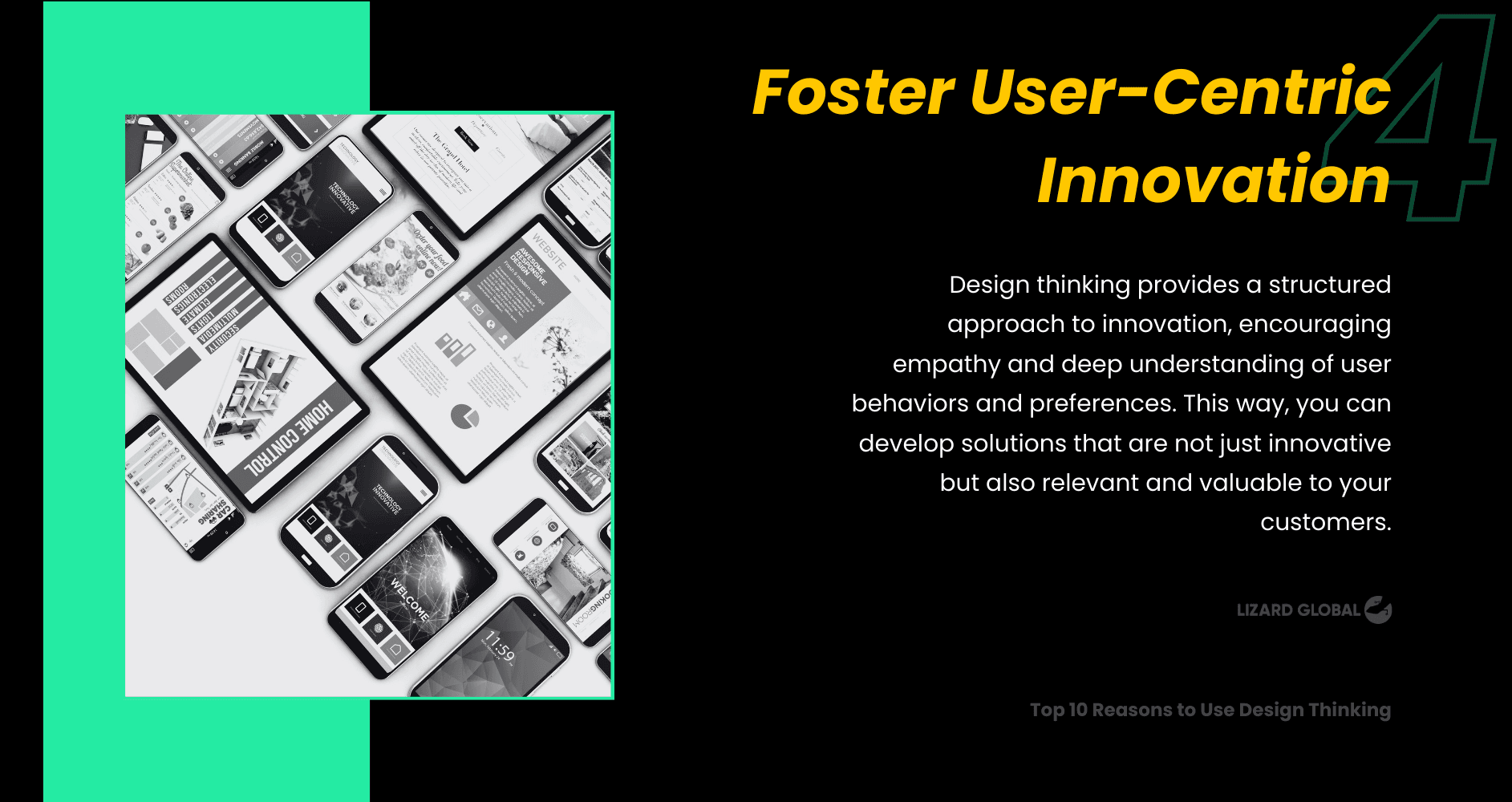
Example: Airbnb’s success lies in its user-centered design, which transformed the way people book accommodations by prioritizing ease of use and personalization.
5. Enable Rapid Prototyping and Validation
Speed is essential in today’s dynamic markets. Design thinking supports rapid prototyping and iterative testing, allowing you to validate ideas quickly before full-scale implementation. This reduces risk and saves time by catching potential flaws early in the process.

Example: Startups often create Minimum Viable Products (MVPs) to test concepts rapidly and gather feedback, using insights to refine their final offerings.
Want to find out how much it costs to build your dream app or web app?
6. Solve Complex Problems with Structure
Complex, multi-faceted challenges require a structured problem-solving approach. Design thinking breaks down problems into manageable steps, enabling teams to develop holistic solutions that take all factors into account while maintaining a clear focus on the end user.
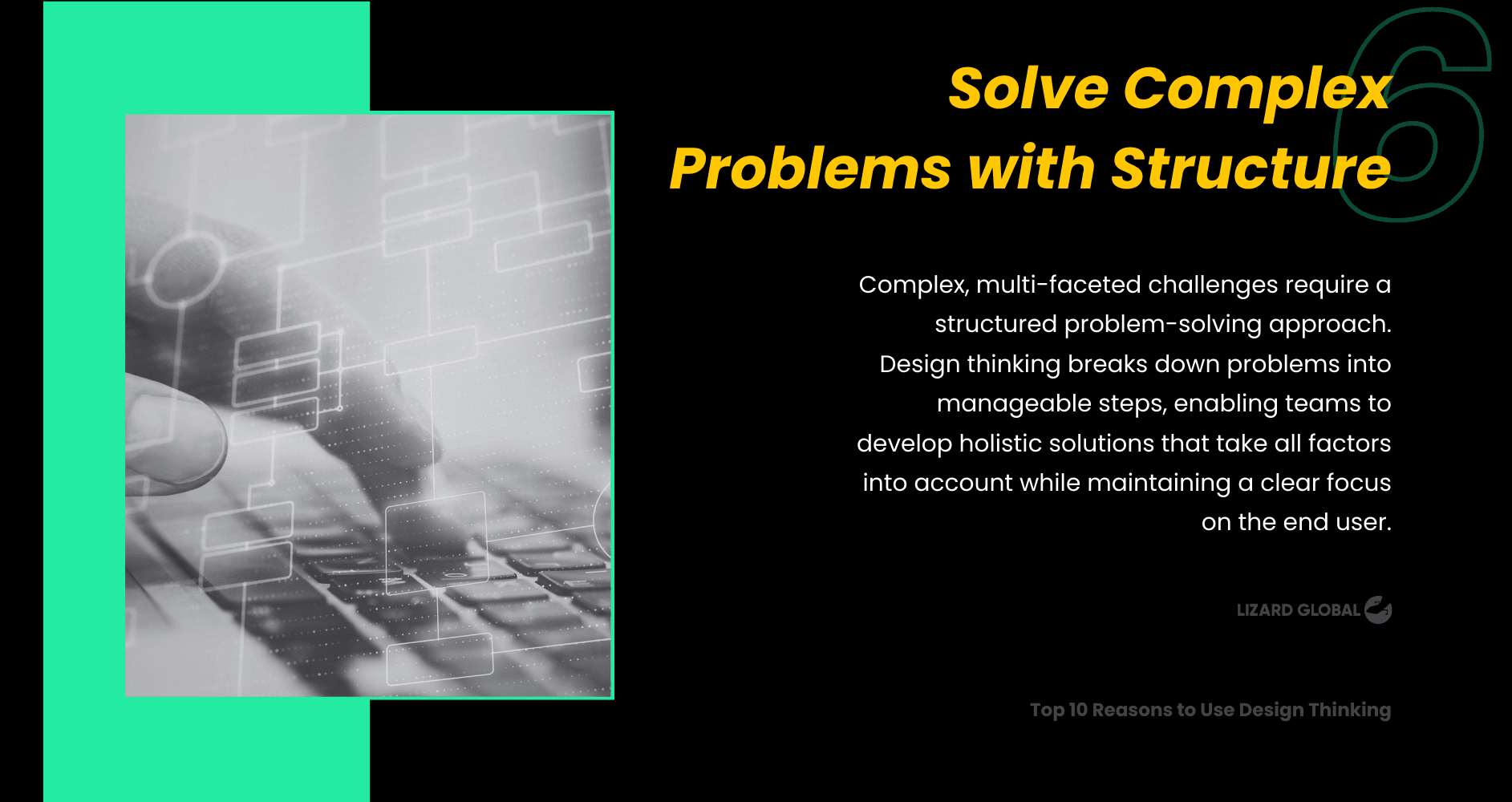
Example: Government agencies are increasingly adopting design thinking to tackle societal challenges, such as urban planning and healthcare accessibility, by involving citizens directly in the process.
7. Enhance User Satisfaction
Delivering solutions that meet — or better yet, exceed — expectations requires a deep understanding of users. Design thinking promotes empathy-driven insights, resulting in products that genuinely improve user experiences and satisfaction.

Example: Netflix constantly refines its recommendation algorithms based on user feedback, keeping satisfaction and engagement high.
8. Avoid Costly Mistakes Through Early Testing
Late-stage changes are often expensive and disruptive. Design thinking’s iterative approach ensures potential issues are identified early, minimizing costly rework and reducing the risk of project failure.

Example: Tesla’s iterative design process for its electric vehicles includes constant testing and feedback to ensure each model meets customer expectations.
9. Strengthen Team Collaboration
A lack of collaboration can cripple even the best ideas. Design thinking encourages cross-functional teamwork, involving diverse perspectives and skill sets to develop well-rounded solutions. This not only fosters team cohesion but also results in more comprehensive outcomes.

Example: IDEO, a global design firm, thrives on collaborative design thinking workshops that bring together engineers, designers, and strategists.
10. Adapt to Market Changes with Agility
Markets evolve rapidly, and your business needs to stay ahead. Design thinking’s flexible and iterative approach helps you quickly adapt to new trends and changing user preferences, maintaining your competitive edge.
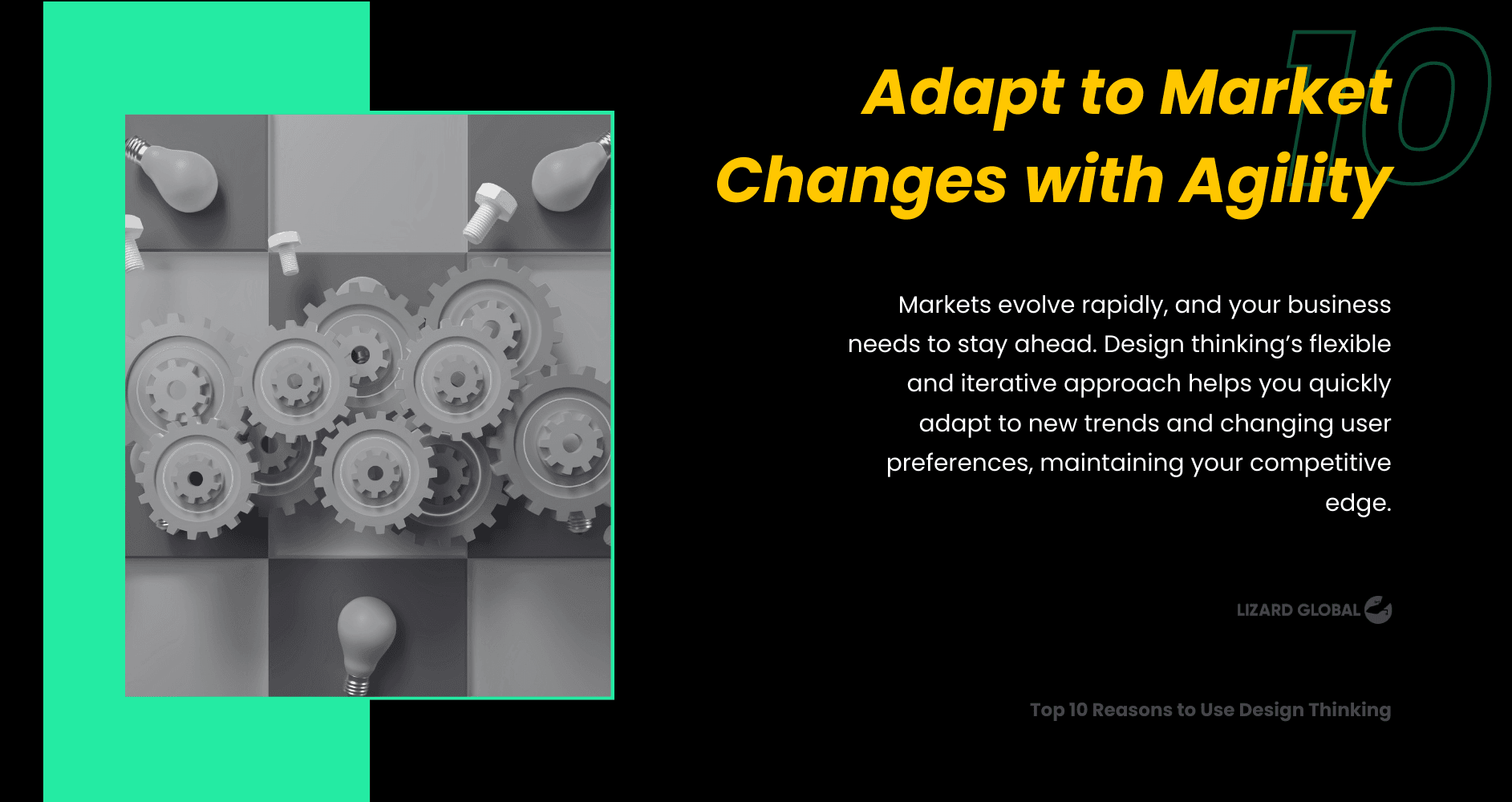
Example: Spotify continuously adapts its user interface based on data-driven insights and user feedback, staying relevant in the fast-changing music streaming landscape.
Elevate Your Business with Lizard Global’s Design Thinking Expertise
At Lizard Global, we specialize in leveraging design thinking to craft word of choice user-centric solutions that meet your business goals. From fostering collaboration and rapid prototyping to enhancing customer satisfaction, our team of experts applies design thinking principles to create impactful digital solutions.

Partner with us to innovate smarter, adapt faster, and achieve lasting success. Get in touch with Lizard Global today to unlock the full potential of design thinking for your business.




